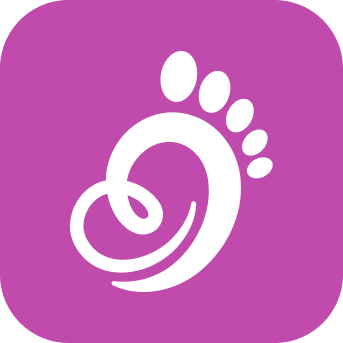Launch Uber Like Handyman App for your business. Scalable, customizable solutions to launch quickly.
In today’s fast-paced world, no one wants to spend hours searching for a reliable handyman. People expect instant booking, upfront pricing, and trustworthy professionals similar to how Uber transformed the taxi industry. That’s why building a handyman app like Uber has become one of the hottest opportunities in the on-demand economy.
From plumbing and painting to furniture assembly and electrical work, an Uber-style handyman app connects customers to nearby service providers within minutes. This article is a complete step-by-step guide on creating your own handyman marketplace. We’ll cover market trends, business models, essential features, technology stack, development costs, monetization strategies, and growth hacks all tailored for 2025.
Whether you’re a startup founder, a local business owner, or a tech entrepreneur, this guide will help you launch a scalable handyman app that customers love and professionals trust.
Why Now is the Right Time for a Handyman App
- Rising demand: Households increasingly outsource small repairs and maintenance.
- Digital adoption: People prefer apps over calling local contractors.
- Trust factor: Background checks, ratings, and reviews build confidence in hiring strangers.
- Trend shift: Platforms like TaskRabbit and Thumbtack have proven that on-demand handyman services are a billion-dollar market.
In 2025, the next wave of apps will focus on AI-powered matching, transparent pricing, and even virtual consultations. If you’re planning to enter, now is the right time.
Business Models for a Handyman App Like Uber
Before writing code, you must choose the right business model:
1. Single-Service Platform
Focus on one service (e.g., only plumbing or only furniture assembly).
✅ Easy to manage
✅ Consistent pricing
❌ Smaller target market
2. Multi-Service Marketplace
Offer multiple handyman categories in one app.
✅ Larger customer base
✅ Better lifetime value
❌ Complex operations & verification
3. Subscription or Membership
Provide customers with monthly/annual home maintenance plans for recurring revenue.
✅ Predictable cash flow
✅ Higher retention
❌ Requires strong service supply
4. Lead Generation Model
Charge service providers for leads (like Thumbtack).
✅ Low risk for customers
✅ Flexible for pros
❌ Lower control over service quality
Key User Journeys in the App
For your app to succeed, each role must have a smooth journey:
Customer Flow
- Browse services
- Get instant price estimate
- Select time slot
- Book & pay securely
- Track job in real-time
- Rate & review the handyman
Service Provider Flow
- Sign up & verify identity (KYC, background checks)
- Upload skills, licenses, and availability
- Accept/decline jobs
- Navigate to customer location
- Complete job & upload photos
- Get instant/scheduled payouts
Admin Flow
- Manage customers & providers
- Verify documents and insurance
- Handle disputes & refunds
- Set pricing rules and fees
- Track analytics and reports
- Launch promotions and discounts
Must-Have Features for a Handyman App
Your MVP (Minimum Viable Product) should include the following:
Customer App Features
- Easy sign-up & login
- Search and filter by service type
- Transparent pricing & cost estimator
- Real-time job tracking
- Secure multiple payment options
- Ratings & reviews
Provider App Features
- Document upload & background verification
- Set availability and service area
- Job acceptance/rejection
- Navigation & route optimization
- Wallet & payout management
Admin Dashboard
- Customer & provider management
- Service category management
- Commission & pricing control
- Dispute resolution system
- Analytics and reporting tools
Development Cost Breakdown
The cost of developing a handyman app like Uber depends on features, complexity, and region of your development team.
Approximate MVP Cost
- The cost of developing a Handyman App can vary depending on several factors:
- App Complexity: The more features (real-time tracking, payment gateway, etc.), the higher the development cost.
- Platform: Whether you're developing for iOS, Android, or both platforms will affect the price.
- Design and UI/UX: A highly user-friendly design with an intuitive interface may increase costs but is essential for user retention.
- Development Team: The location and expertise of the development team influence the price. Hiring developers from high-cost regions like the US or Europe may be more expensive than in areas like India.
- Backend & Server Setup: If your app requires complex back-end services (like real-time tracking, secure payment processing), it may increase costs.
- Maintenance & Updates: Post-launch maintenance and adding new features will add to the overall cost.
On average, the cost to develop a basic handyman app can range from $15,000 to $50,000, while a more complex app with advanced features can exceed $100,000.
Monetization Strategies
Your app can generate revenue in multiple ways:
- Commission fee: Deduct a % from each completed booking
- Subscription fee: Charge customers or pros for premium features
- Lead fee: Pros pay to connect with customers
- Cancellation fee: Customers pay for last-minute cancellations
- Advertising & promotions: Featured listings for providers
Challenges and How to Overcome Them
- Supply acquisition: Convince quality pros to join → offer fair commission & instant payouts.
- Trust & safety: Customers fear scams → conduct strict KYC, background checks, and insurance.
- Cancellations: Reduce with deposits and cancellation policies.
- Customer retention: Add loyalty programs and referral discounts.
- Competition: Differentiate with niche features like video consultations or AI-powered job matching.
Growth & Marketing Playbook
- Local SEO: Create pages like “Handyman in [City] – Same-Day Service.”
- Social proof: Encourage reviews and testimonials after each job.
- Referral program: Give discounts for inviting friends.
- Partnerships: Collaborate with property managers, real estate agencies, and home warranty providers.
- Paid ads: Use Google Ads + Facebook Ads for local targeting.
- Content marketing: Publish blogs about DIY, repair tips, and home care trends.
Future Trends in Handyman Apps
- AI-powered matching: Match customers with the right pro instantly.
- Remote video handyman: Solve minor issues via video call before dispatch.
- Smart home integration: IoT devices alert the app for maintenance needs.
- Subscription-based home care: Customers pay monthly for routine services.
Quick Takeaways
- Start simple: Launch with 3–5 services in one city.
- Build trust: Background checks, insurance, and transparent pricing are key.
- Monetize smartly: Use commission + subscriptions for stability.
- Reduce cancellations: Add deposits and reminders.
- Think long-term: Add AI, video consultations, and subscription plans.
Conclusion
Creating a handyman app like Uber in 2025 is more about trust and execution than just technology. Customers want instant, reliable service. Service providers want steady income and fair treatment. By focusing on verified supply, smooth UX, transparent pricing, and retention programs, you can build a profitable marketplace that scales city by city.
Start lean with an MVP, test your business model, then scale with automation and advanced features like AI-powered matching. The on-demand handyman market is still growing and the right app can become the “Uber for home services” in your region.
If you were launching a handyman app, which services would you include first plumbing, painting, or furniture assembly?
Drop your answer in the comments and don’t forget to share this guide with fellow entrepreneurs!
References (Authoritative Sources)
- TaskRabbit – Official Website
- Thumbtack – On-demand handyman services
- Uber Business Model – Case studies
- Market Research Reports – On-demand home services growth (2025 projections)




























